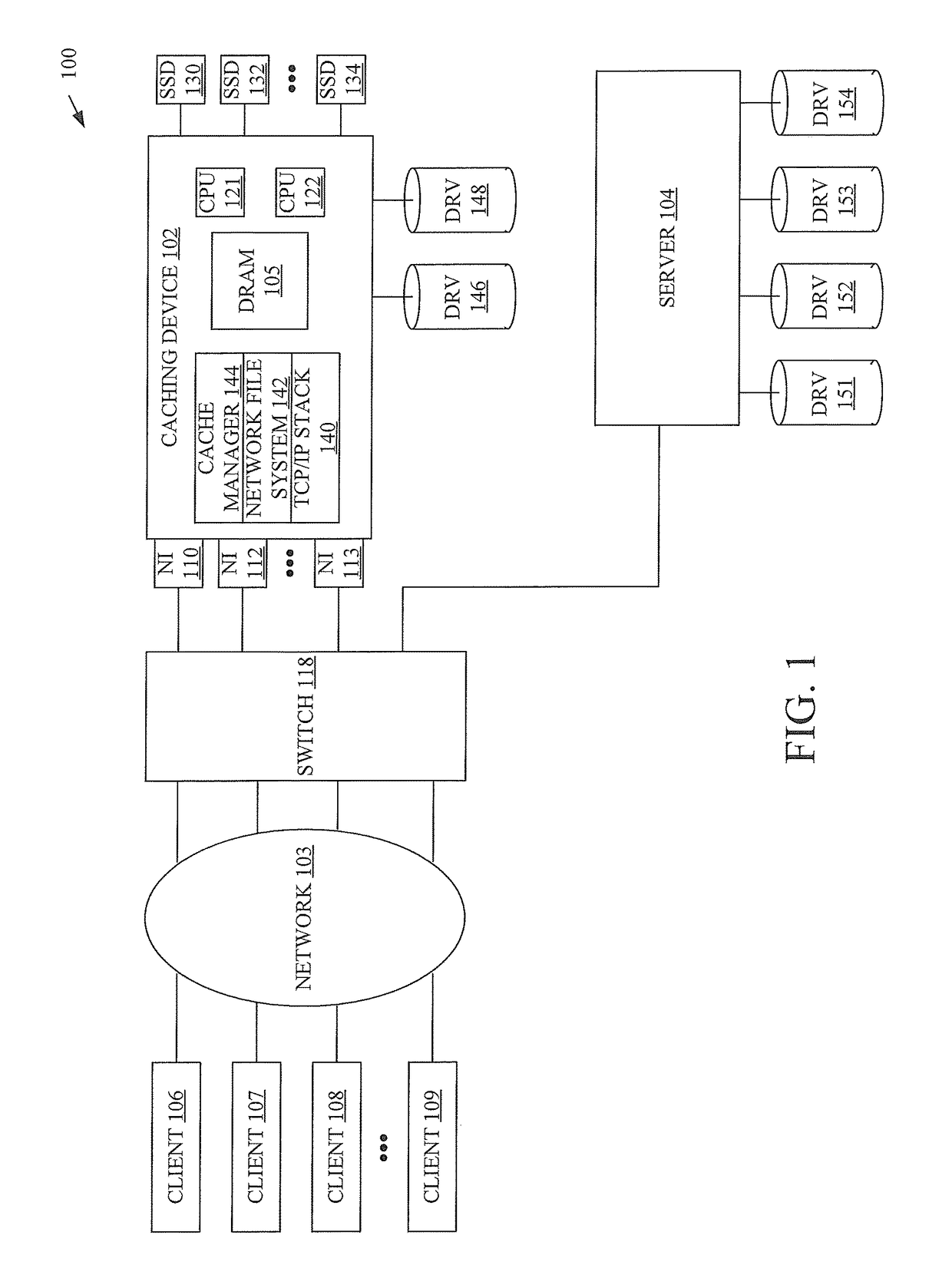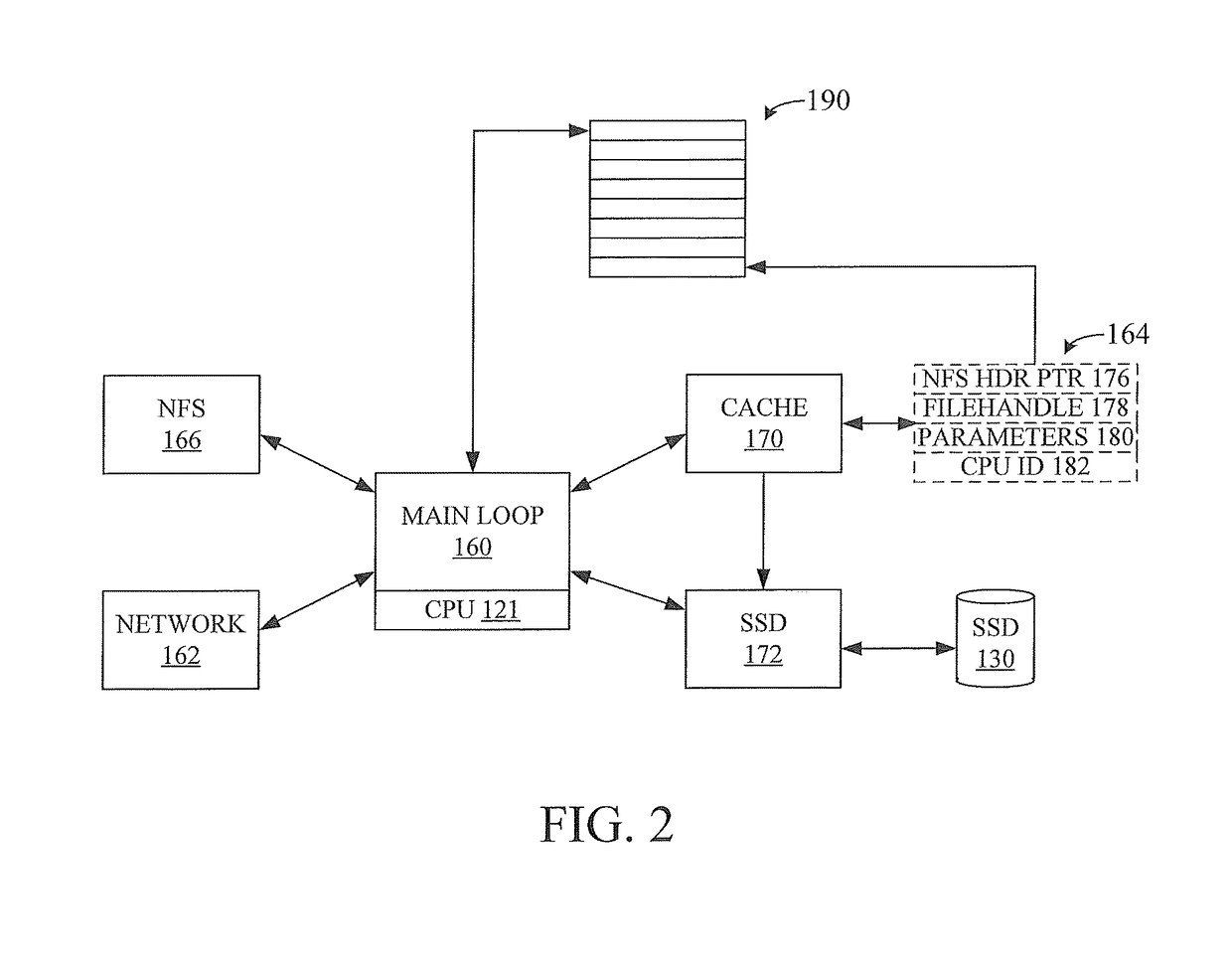Network cache accelerator
a network cache accelerator and accelerator technology, applied in the field of network cache accelerators, can solve the problems of limiting client access speed, affecting the speed of data transfer, and server may still be limited to about 40,000 iops, and achieve the effect of increasing speed
- Summary
- Abstract
- Description
- Claims
- Application Information
AI Technical Summary
Benefits of technology
Problems solved by technology
Method used
Image
Examples
Embodiment Construction
[0028]FIG. 1 is a schematic diagram of an embodiment of a system 100 that includes a caching device 102 that is coupled to a server 104 that stores data for clients 106-109. At least one network 103, which may include a switch 118, couples clients 106-109 to server 104 and caching device 102. Network interfaces 110, 112 and 114 couple caching device 102 to network 103. The multiprocessor caching device 102 may be disposed between clients 106-109 and server 104 on the network 103, so that communications between clients 106-109 and server 104 are routed through the caching device. Caching device 102 contains at least two physical processors 121 and 122, DRAM 105, optional disk drives 146 and 148, and solid-state drives 130, 132, 133 and 134. Although two physical processors are illustrated for clarity, many more processors may be provided on the caching device to work on network communications. For example, each CPU 121 and 122 may have four cores, resulting in eight physical processo...
PUM
 Login to View More
Login to View More Abstract
Description
Claims
Application Information
 Login to View More
Login to View More - R&D
- Intellectual Property
- Life Sciences
- Materials
- Tech Scout
- Unparalleled Data Quality
- Higher Quality Content
- 60% Fewer Hallucinations
Browse by: Latest US Patents, China's latest patents, Technical Efficacy Thesaurus, Application Domain, Technology Topic, Popular Technical Reports.
© 2025 PatSnap. All rights reserved.Legal|Privacy policy|Modern Slavery Act Transparency Statement|Sitemap|About US| Contact US: help@patsnap.com



